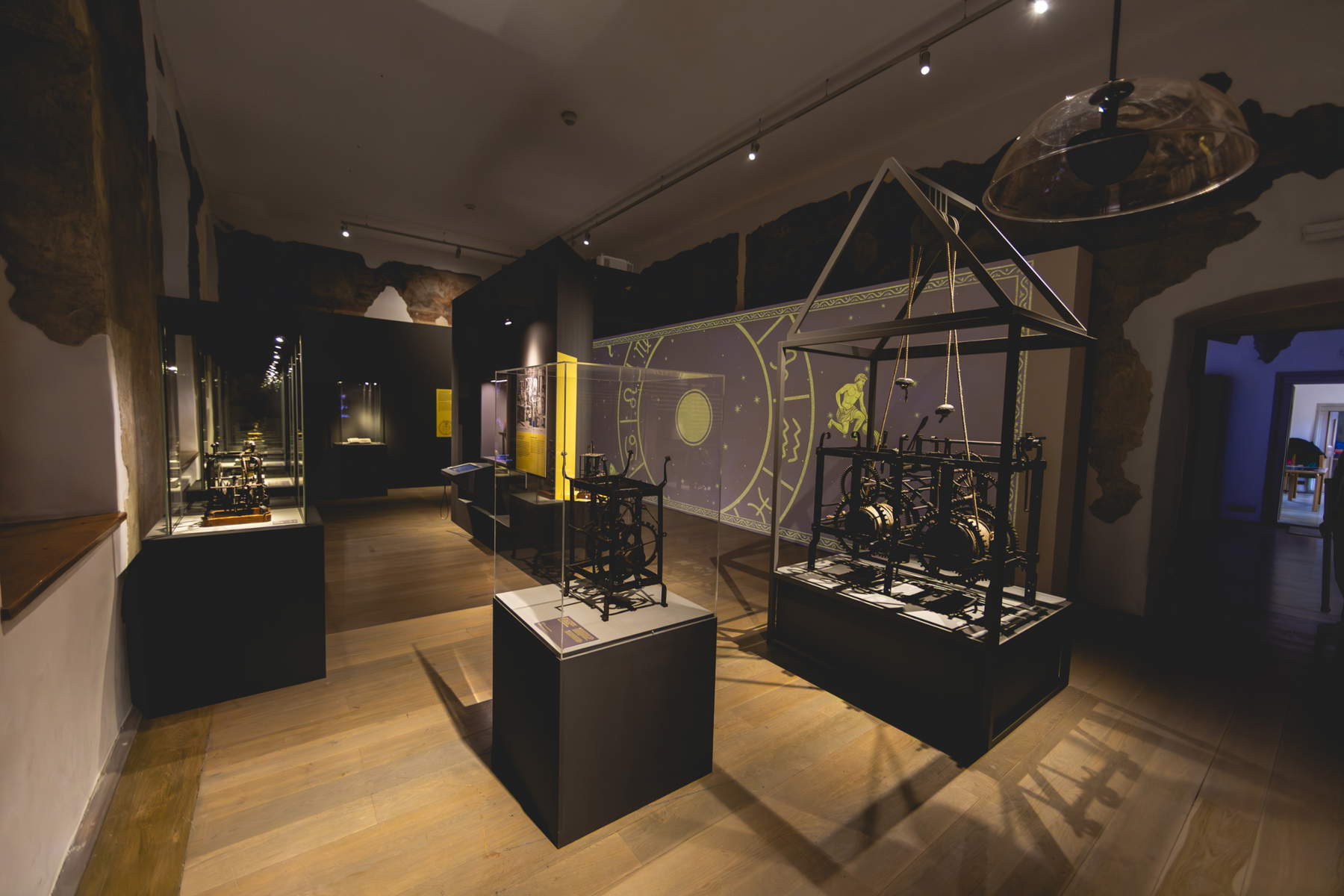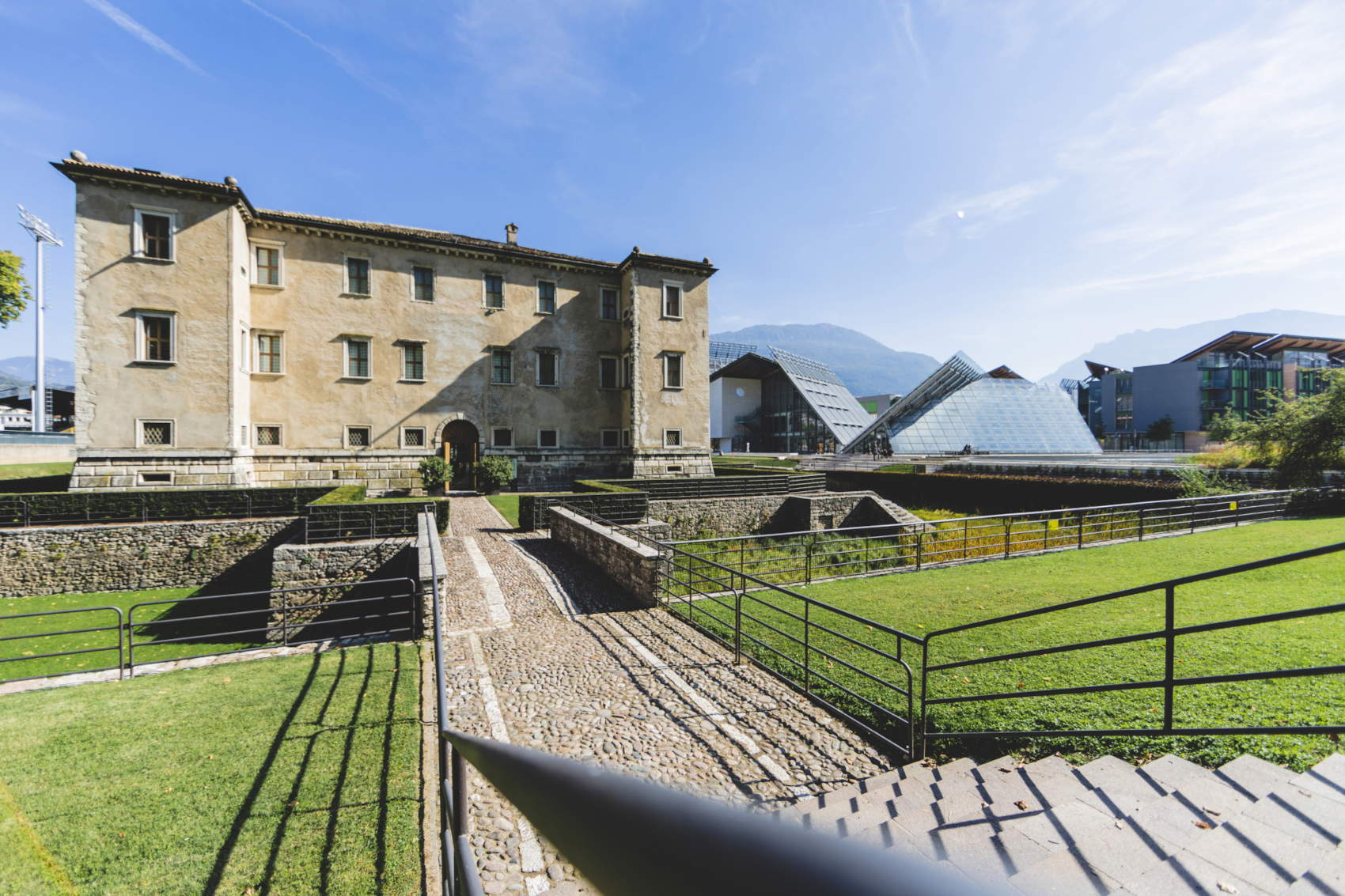The 16th-century Albere Palace in Trento has reopened to the public after a major restoration project, on the occasion of the opening of the exhibition The Power of Machines. The exhibition relates the technological and social innovations that characterized the period when the Palace was built to contemporary transformations: original devices, rare books and period instruments become part of a diachronic narrative that invites questions about the role of technology in the formation of modern societies and the tensions it has generated, then and now. The exhibition, which can be visited until May 31, 2026, is curated by MUSE - Trento Museum of Science (Marco Avanzini, together with Elisabetta Flor, Isabella Salvador and Luca Scoz), from a scientific project by Luca Ciancio (University of Verona), in collaboration with Castello del Buonconsiglio - Monumenti e Collezioni provinciali, METS - Museo Etnografico Trentino, and MITAG - Museo Storico Italiano della Guerra di Rovereto. Through scientific instruments, ancient machinery and artifacts from some 20 major museum institutions, the exhibition traverses themes ranging from astronomy to early printing techniques, from great explorations to mining, from rural life to the evolution of firearms, to offer an overview of the scope of the transformations taking place and suggest a reflection on the future we are helping to build.
The first half of the sixteenth century in Europe was marked by an increasingly widespread diffusion of machines in almost every sphere of the economy and social life. Even the elites of the Episcopal Principality of Trent invested significant resources to introduce new technologies into the main regional productive sectors. These tools took on a dual role: on the one hand they improved the extraction of energy and resources, often affecting the environment and workers, and on the other they consolidated new power structures.
A selection of curious objects related to mining and metallurgy illustrates how the exploitation of underground resources, a traditional driver of economic development in many Alpine areas, turned toward the search for innovative materials and new processing techniques. Ancient books and period instruments also testify to the emergence of a new pharmacopoeia, also the result of the contribution of scholars from the Renaissance Trent, based on the use of mineral substances and a wide range of ingredients from the new worlds, which rapidly spread throughout Europe.

The advancement of war technologies, with the introduction of modern firearms, led to a profound renovation of defensive architecture and the adaptation of castles and cities, transforming the entire military set-up and imposing new and continuous financial efforts on governments to keep the state machine up to date.
At the same time, the development of new printing processes and the expansion of printing workshops from the Rhine valley to numerous European centers, including those in Trentino and South Tyrol, played a decisive role in the circulation of scientific knowledge. Indeed, within a few decades, the book became the main tool for disseminating discoveries and innovations, fostering the standardization of observations and methods.
The temporary exhibition is promoted and realized by MUSE - Science Museum of Trento.

“This exhibition,” emphasized Councillor for Education, Culture, Youth and Equal Opportunities of the Autonomous Province of Trento Francesca Gerosa, “is concrete proof of how a strong and cohesive cultural network can generate extraordinary results: museums, institutions, research bodies and universities have worked side by side, sharing visions and expertise, to tell the story not only of the inventions of the 16th century, but above all of the humanity that thought them up. With this exhibition we get a sense of how much knowledge, even when born of technique and mechanical ingenuity, is even stronger when it is generated by relationships, dialogues and alliances. It is this network, made up of diverse professionals united by a common goal, that I wish to celebrate and thank. Because beyond technology, beyond machines, there is always a community that chooses to grow together.”
“The reopening of the marvelous Albere Palace with an exhibition dedicated to technology and its social, cultural environmental impact,” explains MUSE director Massimo Bernardi, “proposes a game of mirrors between signified and signifier, placing among Renaissance architecture and frescoes a reflection that addresses such a contemporary theme starting precisely from the 16th century. The future of post-industrial society will depend in large part on how we develop our relationship with machines; this project offers us a reflection informed by history and projected into the future-a necessary perspective to counter the rampant and pernicious contemporary chronocentrism that risks trapping our gaze solely in the present.”
“The variety of mechanical devices devised by Renaissance engineers cannot fail to arouse the visitor’s curiosity. However,” explains exhibition creator Luca Ciancio, “the current, dizzying acceleration of innovation makes public reflection around the effects of new technologies particularly urgent, allowing us to acquire new levels of awareness. The exhibition itinerary, therefore, recounts events of the past with an eye toward the present and the future with the aim of highlighting the need for a ’government’ of machines based on shared human values.”
“In the halls of Albere Palace,” explains Marco Avanzini, curator of the exhibition for MUSE together with Elisabetta Flor, Isabella Salvador and Luca Scoz, “we discover how the decisive development of sixteenth-century technology allowed the boundaries of the known world to be ever wider, and how the advent of technology forever changed the economy and society of this part of the world. The evocative setting of the building, coeval with the stories being told, lends additional charm to the exhibition in which the original materials and layout dialogue with the Renaissance frescoes in some of the rooms.”
The exhibition is part of the Euregio Year of Museums 2025 / Euregio Museum Jahr 2025 program, which takes its cue from the historic 16th-century social uprisings to invite contemporary reflection on social justice and equity, crisis management and forms of resistance. An intent well summarized by the motto "Looking Beyond. Starting from past conflicts and forms of resistance, in numerous initiatives a reflection on the present is stimulated by inaugurating spaces of encounter and confrontation in a diverse museum landscape in the Euroregion.

 |
| Trento, Palazzo delle Albere reopens restored to the public with a new exhibition on the power of machines |
Warning: the translation into English of the original Italian article was created using automatic tools. We undertake to review all articles, but we do not guarantee the total absence of inaccuracies in the translation due to the program. You can find the original by clicking on the ITA button. If you find any mistake,please contact us.